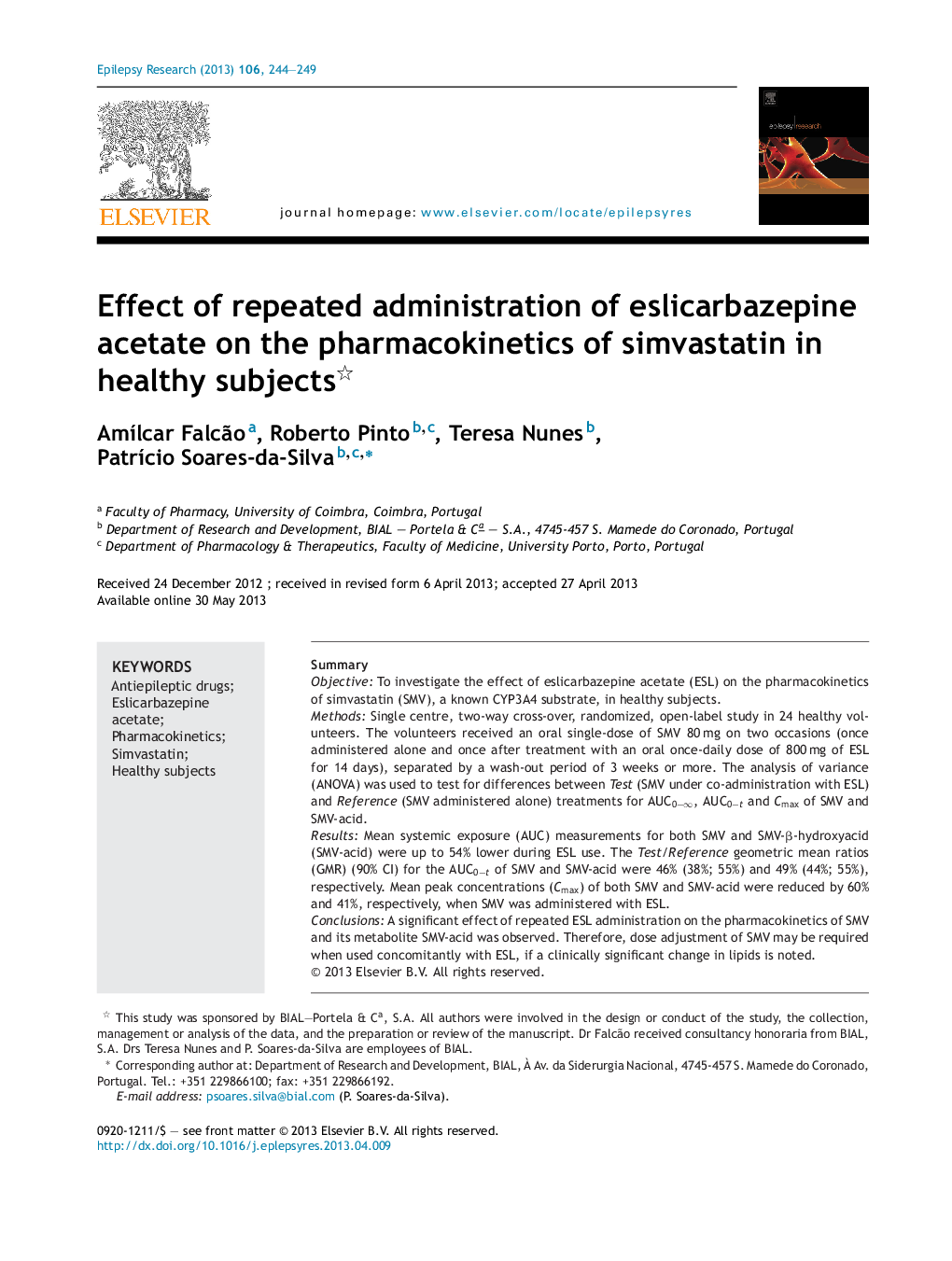| Article ID | Journal | Published Year | Pages | File Type |
|---|---|---|---|---|
| 6015759 | Epilepsy Research | 2013 | 6 Pages |
â¢ESL significantly decreased the exposure to simvastatin and simvastatin-β-hydroxyacid.â¢This effect is most likely mediated by an induction of CYP3A4 metabolism.â¢Dose adjustment of simvastatin may be required when used concomitantly with ESL.
SummaryObjectiveTo investigate the effect of eslicarbazepine acetate (ESL) on the pharmacokinetics of simvastatin (SMV), a known CYP3A4 substrate, in healthy subjects.MethodsSingle centre, two-way cross-over, randomized, open-label study in 24 healthy volunteers. The volunteers received an oral single-dose of SMV 80 mg on two occasions (once administered alone and once after treatment with an oral once-daily dose of 800 mg of ESL for 14 days), separated by a wash-out period of 3 weeks or more. The analysis of variance (ANOVA) was used to test for differences between Test (SMV under co-administration with ESL) and Reference (SMV administered alone) treatments for AUC0ââ, AUC0ât and Cmax of SMV and SMV-acid.ResultsMean systemic exposure (AUC) measurements for both SMV and SMV-β-hydroxyacid (SMV-acid) were up to 54% lower during ESL use. The Test/Reference geometric mean ratios (GMR) (90% CI) for the AUC0ât of SMV and SMV-acid were 46% (38%; 55%) and 49% (44%; 55%), respectively. Mean peak concentrations (Cmax) of both SMV and SMV-acid were reduced by 60% and 41%, respectively, when SMV was administered with ESL.ConclusionsA significant effect of repeated ESL administration on the pharmacokinetics of SMV and its metabolite SMV-acid was observed. Therefore, dose adjustment of SMV may be required when used concomitantly with ESL, if a clinically significant change in lipids is noted.
